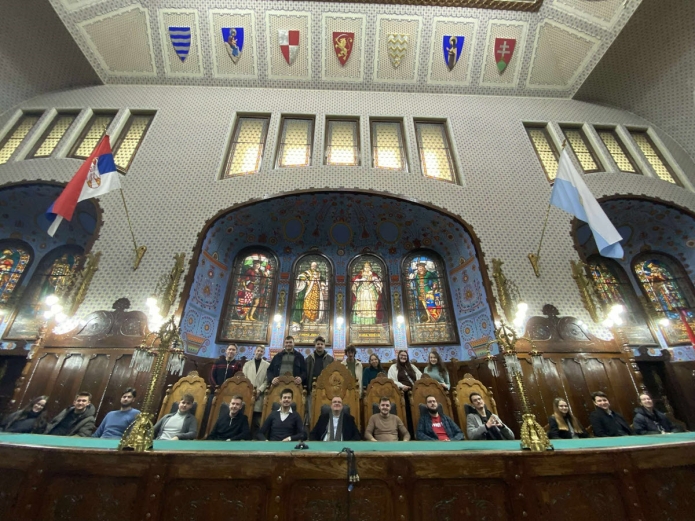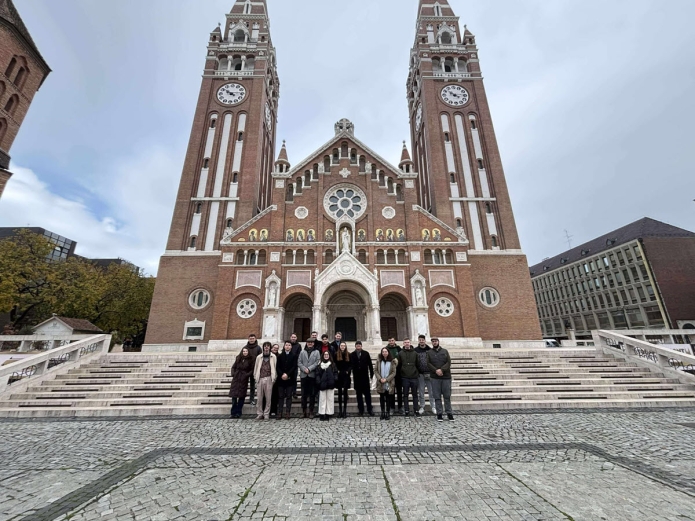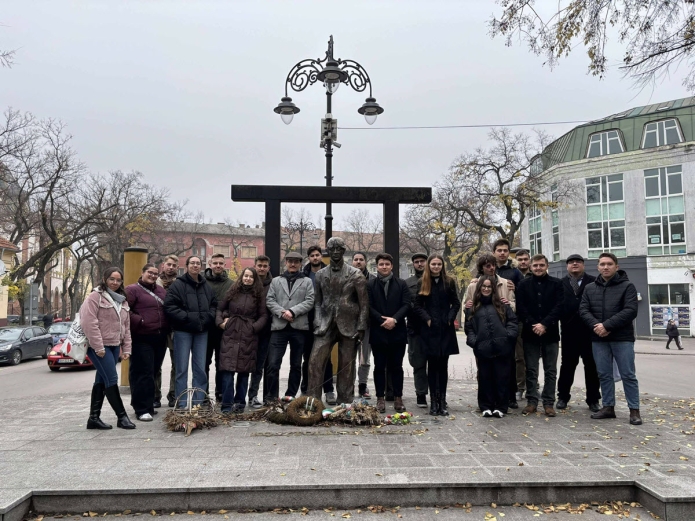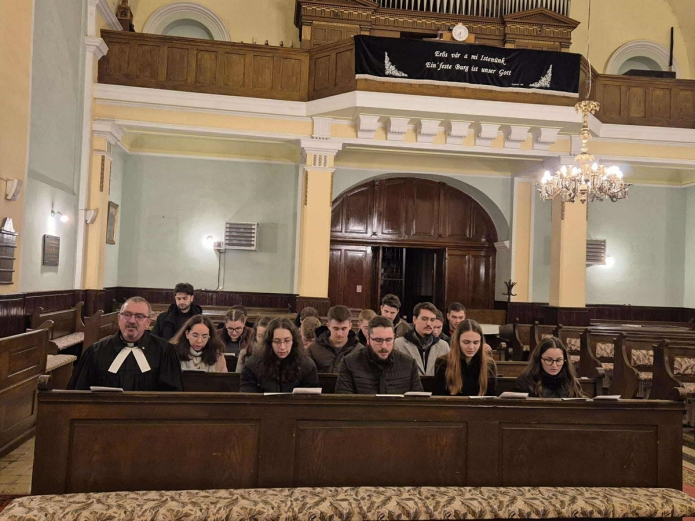Why not a seventh trip and a second mobility? Midway through the first semester of the fourth year, that sounds like a big number. Yet our class didn’t say “no” for the seventh time either. There is still something – or rather someone – that binds us together.
Why Not? Erasmus Short Mobility in Southeastern Hungary and Vojvodina




We set off as a full group on Sunday afternoon toward Szeged, where Monday began with a city tour guided by historian István Zombori. We visited the replica of the church on Farkas Street, then the Franciscan church and monastery in Szeged, which today hosts two monks despite many challenges. Bombings during the war are recalled by bricked-up windows, and the level of the Tisza flood is marked by a short inscription on the wall: “Here was the water.”
After exploring the Alsóváros district, we visited Szeged Cathedral, where the walls are decorated not with baroque phrases but with frescoes. The parish church of Saint Demetrius was destroyed after the great Szeged flood, which led to the construction of a new church. The memory of the old church is preserved only by the Dömötör Tower. The development of the episcopal seat began after Emperor Franz Joseph’s personal visit, which is also recorded in the sanctuary’s reliefs.
At the University of Sciences, we attended two lectures: Molnár Dávid introduced us to the century of the Reformation, and Hegyi Ádám spoke about the Reformation in the southern Hungarian Plain, focusing on the founding of communities. We learned about tobacco growers, the origin of the name Gyevi, and villages that emphasized their Reformed identity even in their names (Reformátuskovácsháza). Paprika from Szeged was mentioned at almost every occasion, so we didn’t miss the halászlé at the end.
At Ópusztaszer, we were impressed by the Feszty Panorama, painted on a 1,725 m² canvas using 100 tons of paint. The next stop was Hódmezővásárhely, where we visited the Bethlen Gábor Reformed High School, its library, archive, and physics lab. The archive preserves valuable pieces thanks to the “Olympus” – the highest, inaccessible shelves where numerous books with precious annotations have survived.
The day ended back in Szeged, where we were welcomed by one of our doctors, Kereskényi Sándor, at the Honvéd Tér congregation. The Reformation in Vojvodina could not be left out: in Subotica, we were received by the Evangelical and Reformed congregations. The city is a remarkable example of Art Nouveau, visible in its squares, town hall, and synagogue. We also visited the congregations of two of our classmates. The end of the Erasmus mobility turned into a class trip. After Subotica, we reached Timișoara, where Evangelical pastor Kovács Zsombor guided us and led an ecumenical vespers. On the way to Cluj, we stopped at Deva Fortress, at the Dávid Ferenc memorial site.
The “why not” attitude has always been part of our temperament – a perseverance and zeal that also characterized John and Peter, because we too cannot choose passivity and indifference (Acts 4:20). Why not have community at Theology? Why not go on an eighth trip?
Albert Szabolcs
4th year student